Milwaukee, WI Pollen and Allergy Report for Summer 2023
Pollen Allergy Trends in Milwaukee, WI
When is pollen lowest in Milwaukee, WI?

February
Lowest month total PPM
Avg. PPM
When is pollen highest in Milwaukee, WI?

May
Highest month total PPM
Avg. PPM
How does pollen in Milwaukee, WI compare to Wisconsin?
Milwaukee has a higher average PPM than the state of Wisconsin.
Milwaukee yearly avg PPM:
Wisconsin yearly avg PPM:
How does pollen in Milwaukee, WI compare to the USA?
Milwaukee has a higher average PPM than the USA.
Milwaukee yearly avg PPM:
USA yearly avg PPM:
Is pollen worse this year in Milwaukee, WI?
Spring 2023 was worse than spring 2022.
Spring 2023 PPM:
Spring 2022 PPM:
Average PPM in Milwaukee, WI
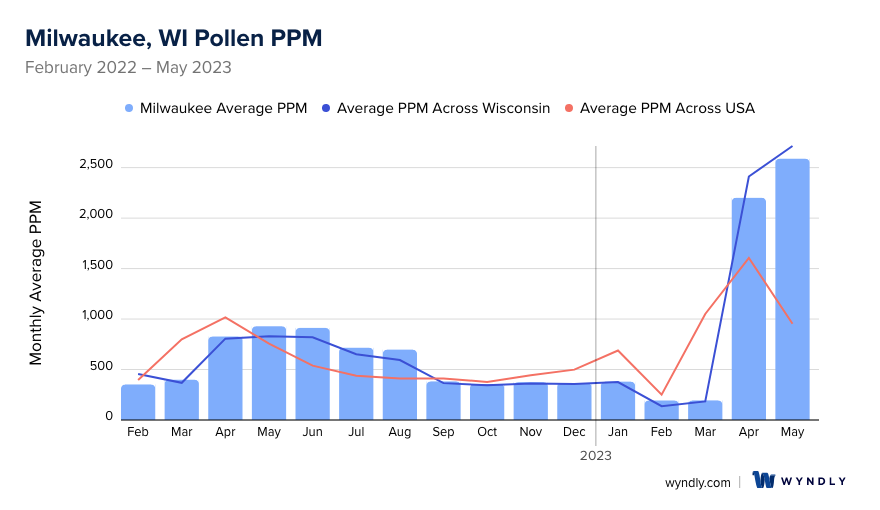
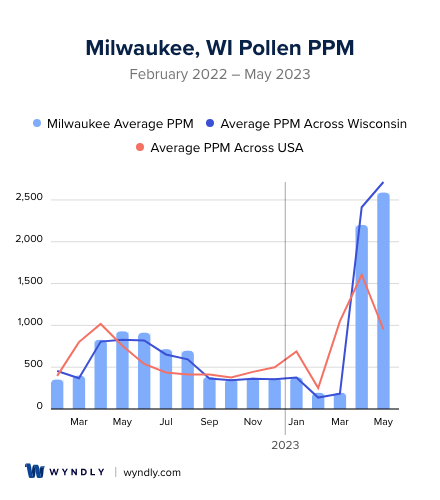
Milwaukee, WI Pollen and Allergy Breakdown by Month
Grass
When is grass pollen highest in Milwaukee, WI?
July has the highest grass pollen in Milwaukee, WI with an average PPM of
When is grass pollen lowest in Milwaukee, WI?
October has the lowest grass pollen in Milwaukee, WI with an average PPM of
Tree
When is tree pollen highest in Milwaukee, WI?
April has the highest tree pollen in Milwaukee, WI with an average PPM of
When is tree pollen lowest in Milwaukee, WI?
October has the lowest tree pollen in Milwaukee, WI with an average PPM of
Weed
When is weed pollen highest in Milwaukee, WI?
May has the highest weed pollen in Milwaukee, WI with an average PPM of
When is weed pollen lowest in Milwaukee, WI?
February has the lowest weed pollen in Milwaukee, WI with an average PPM of
Milwaukee, WI Pollen Monthly Breakdown by Pollen Type
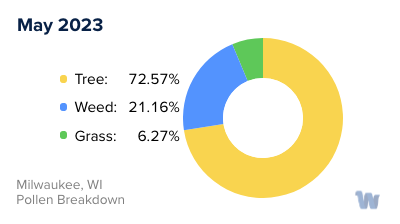
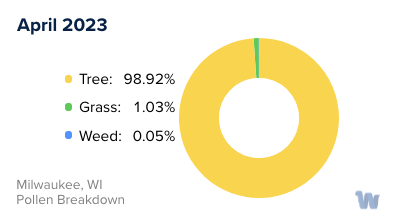
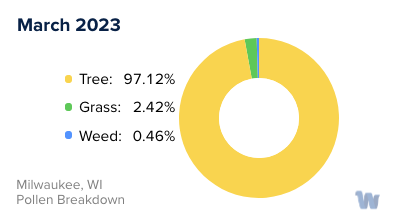
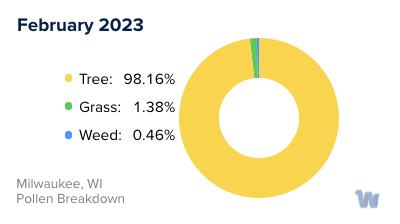
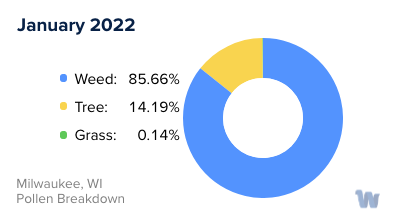
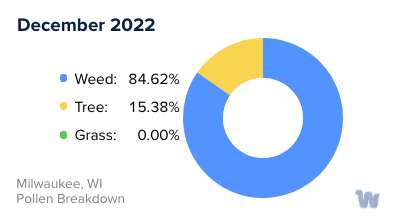
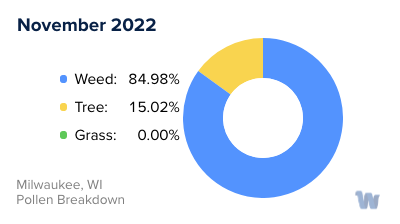
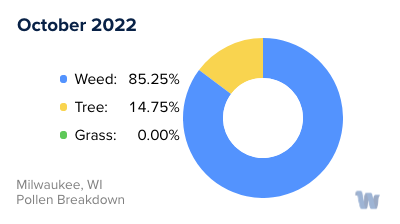
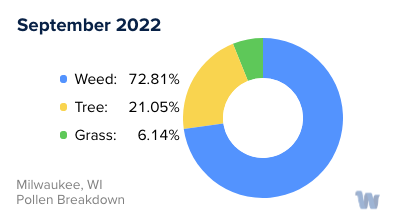
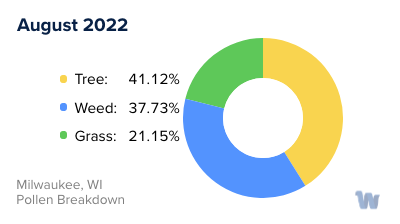
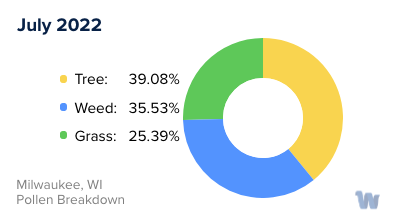
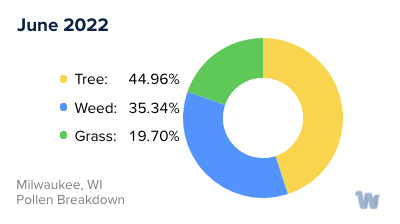
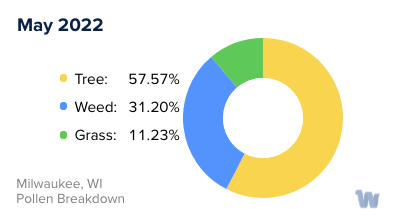
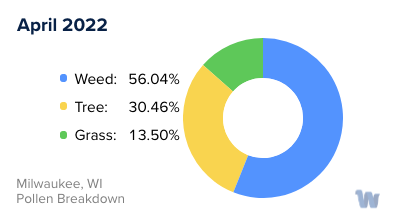
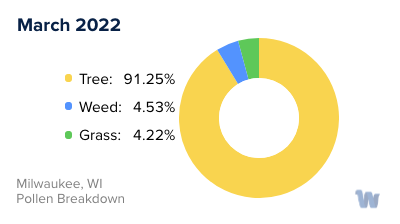
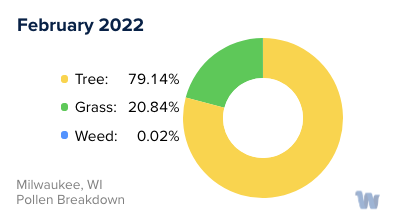
Pollen and Hay Fever in Milwaukee, WI
Pollen allergies, colloquially known as hay fever, are a common concern for residents of Milwaukee, Wisconsin, and can significantly impact quality of life. These allergies are caused by the body's immune response to certain types of pollen, leading to symptoms like sneezing, itchy eyes, and a runny nose.
In Milwaukee, the main culprits for pollen allergies are trees, grasses, and weeds. Each type of plant releases its pollen at different times of the year, meaning that hay fever season can span from early spring to late fall.
Tree pollen is the first to arrive on the scene, typically starting in late March and lasting through June. The most common trees in Milwaukee that produce allergenic pollen include oak, maple, and birch. These trees are prevalent throughout the city and its surrounding areas, contributing to the high pollen counts in the spring.
Following tree pollen season, grass pollen takes the stage from May to July. The most common types of grasses in Milwaukee that can cause allergies are ryegrass and Kentucky bluegrass. These grasses are often found in parks and lawns, making it hard to escape exposure during the late spring and early summer months.
Finally, weed pollen arrives in late summer and can last until the first frost in fall, usually around October. The chief offender among weeds is ragweed, a plant that thrives in the climate of Milwaukee and can produce a large amount of pollen.
It's worth noting that while the general timeline for pollen season remains consistent, exact timing and severity can vary from year to year based on weather conditions. For example, a warm, dry spring can lead to higher tree pollen counts, while a wet, cool summer might reduce grass pollen levels.
Understanding the types of pollen and their respective seasons can help Milwaukee residents anticipate and manage their pollen allergies. Despite the challenges, it's entirely possible to enjoy the beautiful outdoor spaces that Milwaukee offers, even during pollen season.

